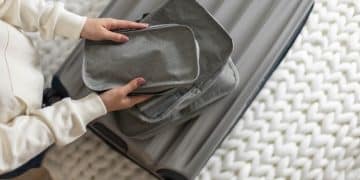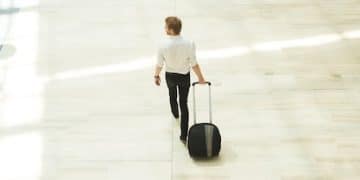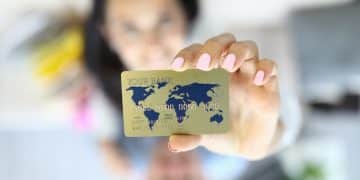Pack Like a Pro: Carry-On Only & Avoid Baggage Fees
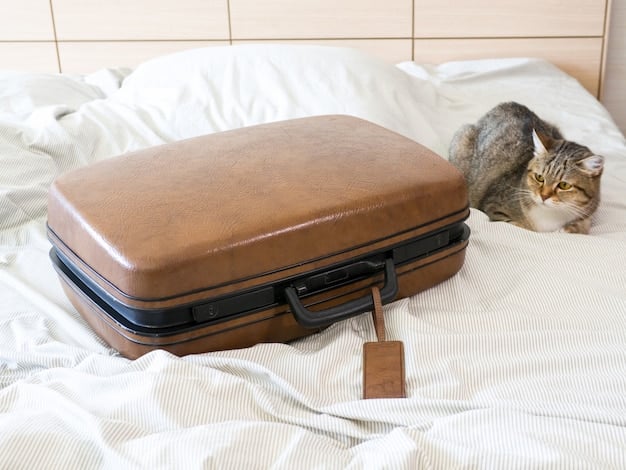
Learn how to pack a carry-on like a professional, maximizing space with techniques like rolling clothes and using packing cubes, while adhering to airline regulations to avoid checked baggage fees and travel efficiently.
Traveling light can save you time, money, and stress. This guide will show you how to pack a carry-on like a pro: maximize space and avoid checked baggage fees, making your next trip smoother and more enjoyable.
Choose the Right Carry-On Luggage
Selecting the appropriate carry-on is the first step towards efficiently packing for your trip. Consider size, weight, and durability when making your choice. A well-chosen bag can make all the difference.
Size and Weight Restrictions
Different airlines have varying size and weight restrictions for carry-on luggage. Always check the specific rules of the airline you’re flying with to avoid any unexpected fees or having to check your bag at the gate. Exceeding these limits can be costly and inconvenient.
Types of Carry-On Bags
There are several types of carry-on bags available, each with its own advantages. Rolling suitcases are easy to maneuver, while backpacks offer more flexibility. Duffel bags can be a good option for oddly shaped items, and hybrid bags combine features of different types. Choose the one that best suits your travel style and needs.
- Rolling Suitcases: Ideal for smooth surfaces and heavier loads.
- Backpacks: Great for navigating crowded areas and uneven terrain.
- Duffel Bags: Suited for flexible packing and larger items.
- Hybrid Bags: Offer a balance of features for versatile travel.
Consider the material of the bag as well. Durable materials like ballistic nylon or hard-shell polycarbonate can withstand the rigors of travel, protecting your belongings and ensuring your bag lasts longer. Also, look for features like multiple compartments, compression straps, and sturdy zippers.
Choosing the right carry-on involves considering size, weight, type, and material. Doing your research and selecting a bag that fits your specific needs will set you up for a smoother and more efficient packing experience.
Plan Your Outfits Strategically
Careful planning is key to packing efficiently. Instead of throwing in random clothes, plan your outfits in advance. This approach helps you avoid overpacking and ensures you have everything you need without excess baggage.
Create a Capsule Wardrobe
A capsule wardrobe consists of a limited number of versatile clothing items that can be mixed and matched to create different outfits. Choose neutral colors and classic styles that can be dressed up or down. This maximizes your outfit options while minimizing the number of items you need to pack.
Choose Versatile Clothing Items
Opt for clothing items that can be worn in multiple ways. For example, a scarf can be used as a shawl, a blanket, or even a makeshift pillow. Similarly, a pair of neutral-colored pants can be paired with different tops for various occasions. Versatile items save space and add flexibility to your travel wardrobe.
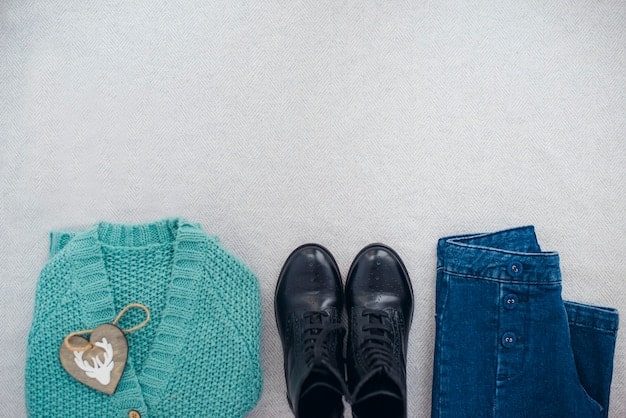
When planning your outfits, consider the activities you’ll be doing on your trip. If you’re going hiking, pack appropriate outdoor gear. If you have a formal event, include a dressy outfit. However, try to choose items that can be used in multiple settings to reduce the overall number of clothes you need to bring.
Planning your outfits strategically involves creating a capsule wardrobe and choosing versatile clothing items. By carefully selecting what you pack, you can travel lighter and avoid unnecessary checked baggage fees.
Master Space-Saving Packing Techniques
The way you pack your clothes can significantly impact how much you can fit into your carry-on. Mastering space-saving techniques is essential for maximizing your available space and avoiding wrinkles.
Rolling vs. Folding Clothes
Rolling clothes is often more space-efficient than folding. Rolled clothes take up less room and can help prevent wrinkles. However, some items, like structured jackets or dress shirts, may be better folded to maintain their shape. Experiment to see what works best for different types of clothing.
Using Packing Cubes
Packing cubes are fabric containers that help organize your clothes and compress them into smaller spaces. They also make it easier to find specific items without unpacking your entire bag. Different sizes of packing cubes can be used to separate different types of clothing or accessories. They can also protect your clothes from getting dirty or damaged during transport. You can even use one as a dirty clothes bag!
- Organization: Keep your clothes neatly separated and easy to find.
- Compression: Reduce the volume of your clothing to maximize space.
- Protection: Shield your clothes from dirt and damage.
Vacuum compression bags are another option for saving space, but they can sometimes lead to wrinkles. If you choose to use them, consider packing items that don’t wrinkle easily, like sweaters or t-shirts. Also, be aware that vacuum-sealed bags don’t reduce the weight of your luggage, so you still need to stay within the airline’s weight restrictions.
Mastering space-saving packing techniques, such as rolling clothes and using packing cubes, can dramatically increase the amount you can fit into your carry-on. These methods keep your belongings organized and prevent wrinkles, making your travel experience more enjoyable.
Minimize Toiletries and Liquids
Toiletries and liquids can take up a significant amount of space in your carry-on. Adhering to the TSA’s 3-1-1 rule and minimizing the number of liquids you bring can save space and prevent airport security hassles.
Adhere to the TSA 3-1-1 Rule
The TSA 3-1-1 rule states that liquids must be in containers of 3.4 ounces (100 milliliters) or less, placed in a single, quart-sized, clear plastic zip-top bag. Only one bag per passenger is allowed. Familiarize yourself with these rules to avoid having your items confiscated at security.
Use Travel-Sized Containers
Instead of bringing full-sized toiletries, invest in travel-sized containers. You can purchase empty travel-sized bottles and fill them with your favorite products, or buy pre-packaged travel-sized toiletries. This reduces the weight and volume of your liquids, allowing you to pack more efficiently. Look for silicone containers, as less space will be used as you use the product!
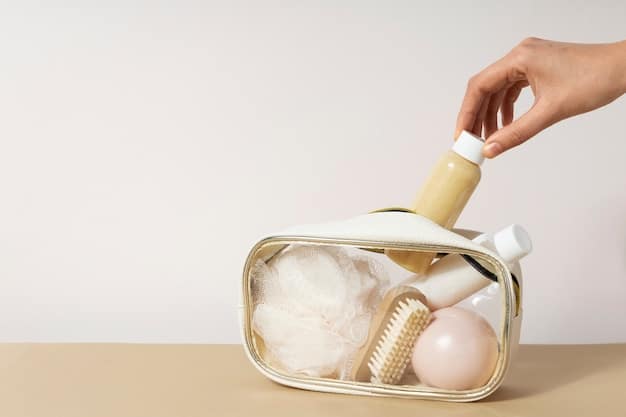
Consider alternative options for toiletries, such as solid shampoos, conditioners, and soaps. These products don’t count as liquids and can save space and prevent accidental spills. Additionally, many hotels provide complimentary toiletries, so check with your hotel before your trip to see what they offer.
Minimizing toiletries and liquids involves adhering to the TSA 3-1-1 rule, using travel-sized containers, and opting for solid alternatives. By carefully managing your toiletries, you can free up valuable space in your carry-on and breeze through airport security.
Wear Your Heaviest Items
One often overlooked strategy for maximizing carry-on space, is to wear your heaviest and bulkiest items on the plane. This can free up significant room in your suitcase.
Wear Bulky Shoes and Jackets
Shoes and jackets tend to take up a lot of space in your luggage. Wear your heaviest shoes, such as boots or sneakers, on the plane. Similarly, carry or wear your jacket instead of packing it. If you get too warm, you can always remove it and store it in the overhead compartment.
Layer Your Clothing
Layering your clothing is another effective way to reduce the volume of your packed items. Wear multiple layers of clothing, such as a t-shirt, a sweater, and a jacket. This allows you to adjust to different temperatures while minimizing the amount of clothing in your bag. You also can tie a light sweater or jacket around your waist until you need it.
Wearing your heaviest items is a simple yet effective way to save space in your carry-on. By strategically wearing bulky shoes, jackets, and layered clothing, you can lighten your load and avoid checked baggage fees. Also, you get comfortable!
Utilize Personal Item Strategically
In addition to your carry-on, most airlines allow you to bring a personal item, such as a purse, laptop bag, or small backpack. Utilizing your personal item wisely can provide extra space for essential items.
Choose the Right Personal Item
Select a personal item that is both comfortable to carry and spacious enough to hold your essentials. A small backpack or a tote bag with multiple compartments is a good choice. Make sure it fits under the seat in front of you on the plane.
Pack Essentials and Valuables
Use your personal item to carry essential items such as your passport, wallet, phone, and medications. Also, pack valuable items like jewelry and electronics in your personal item to keep them secure. This is a good place to store your 3-1-1 bag and easy to access snacks.
Remember that while you want efficiency, keep comfort in mind. Pack a soft neck pillow so you can sleep on the plane, and don’t forget other items to help you relax. A personal item is a great place to store earbuds or a sleep mask.
- Essentials: Keep important documents and medications within easy reach.
- Valuables: Protect your jewelry and electronics from loss or damage.
- Entertainment: Pack books, magazines, or a tablet for inflight entertainment.
Utilizing your personal item strategically involves choosing the right bag and packing essentials and valuables. By making the most of your personal item, you can carry more without exceeding the carry-on limit.
| Key Point | Brief Description |
|---|---|
| 🧳 Right Luggage | Choose a bag that meets airline size/weight restrictions, with durable material. |
| 👗 Capsule Wardrobe | Plan outfits with versatile items, mixing and matching for different occasions. |
| 📦 Packing Cubes | Organize and compress clothes, making them easy to find without unpacking. |
| 🧴 Travel-Sized | Use travel-sized toiletries and adhere to TSA’s 3-1-1 rule for liquids. |
Frequently Asked Questions
▼
The TSA 3-1-1 rule limits liquids to 3.4 oz (100ml) or less, placed in a single, quart-sized, clear plastic bag. Only one bag is allowed per passenger.
▼
Yes, packing cubes are worth it. They help organize your clothes, compress their volume, and protect them from dirt and damage during travel.
▼
Pack essentials like your passport, wallet, phone, and medications in your personal item for easy access. Also, include valuable items for security.
▼
To minimize wrinkles, roll your clothes tightly and smoothly. Place delicate items in a garment bag or use tissue paper between layers of clothing.
▼
If your carry-on is overweight, remove some items and wear them or transfer them to your personal item to meet the airline’s weight restrictions.
Conclusion
Packing a carry-on like a pro involves careful planning, smart techniques, and strategic choices. By choosing the right luggage, planning outfits, mastering space-saving methods, minimizing toiletries, wearing your heaviest items, and utilizing your personal item effectively, you can maximize space and avoid those pesky checked baggage fees. Happy travels!
